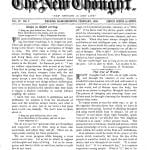 JS saved me this week for Meanderings as I was tied up often enough not to get many on my own. Thanks to JS.
JS saved me this week for Meanderings as I was tied up often enough not to get many on my own. Thanks to JS.
We say a big “We’ll miss you!” to Eugene Peterson while we affirm with him life eternal.
I love the Boston Red Sox #1:
In his first year as manager of the Boston Red Sox, Alex Cora is already making history: His team set a franchise record for the most wins in one season and, after clinching the American League Championship Series, Cora is the first Puerto Rican to lead a team to the World Series.
Cora, who played for the Red Sox from 2005 to 2008, signed a three-year contract with the team last October. He didn’t ask for much when negotiating his contract. “I still remember, it was around this time [last year] when we got the deal done,” he said in a post-game interview last week. “And I didn’t talk about money. I didn’t talk about incentives. I didn’t talk about housing or cars and all that — all I wanted was a plane full of supplies for my hometown.”
The 43-year-old signed with the Red Sox shortly after Hurricanes Irma and Maria devastated Puerto Rico, including his hometown, Caguas.
I have no bias here.
Save for the fact that I’m a San Francisco Giants fan and therefore may carry a marginal distaste for the Los Angeles Dodgers.
It was mildly satisfying, therefore, when the Boston Red Sox beat the Dodgers in Game 2 of the World Series on Wednesday.
Something after that game, though, may fill more objective hearts — and minds — with even greater warmth.
Red Sox leadoff hitter and likely American League MVP Mookie Betts, who was 3-4 in the game, didn’t go straight home.
As NBC Sports Boston’s baseball analyst Lou Merloni tweeted, Betts quietly went to the Boston Public Library at around 1 a.m.
Not to meet a friend or read a book. He went there to offer food to the homeless.
This wasn’t a publicity stunt. Lordy, who organizes a publicity stunt at 1 a.m., without a decent photographer?
This was just pure human decency.
What does it take to be at the pinnacle of your profession and still find the time, in the dead of night, to do something for your fellow human?
Betts was surely tired. He was surely ready to go home.
Instead, just when he might be feeling his luckiest, he spared a thought for those who had no luck at all.
Washington (CNN)The Museum of the Bible in Washington, DC says five of its most valuable artifacts — all thought to be part of the historic Dead Sea Scrolls — are fake and will not be displayed anymore.
German-based scholars tested the fragments and found that five “show characteristics inconsistent with ancient origin and therefore will no longer be displayed at the museum.”“Though we had hoped the testing would render different results, this is an opportunity to educate the public on the importance of verifying the authenticity of rare biblical artifacts, the elaborate testing process undertaken and our commitment to transparency,” said Jeffrey Kloha, the chief curatorial officer for Museum of the Bible.“As an educational institution entrusted with cultural heritage, the museum upholds and adheres to all museum and ethical guidelines on collection care, research and display.”But some scholars had questioned the fragments in the collection even before the museum opened with splashy ceremonies last November. Others believe they are all fake.Steve Green, the museum’s founder and chairman, won’t say how much his family spent for the 16 fragments in its collection. But other evangelicals, including a Baptist seminary in Texas and an evangelical college in California, have paid millions to purchase similar pieces of the Dead Sea Scrolls.
TOKYO — The bats the Red Sox and the Dodgers break during the World Series are likely to be sold at team stores or by memorabilia companies, donated to charity, given away or even repurposed as wooden handles for bottle openers.
In the Japan Series, which begins Saturday in a country meticulous about recycling, cracked and splintered bats may find another use as objects indispensable to life here: chopsticks.
Each season, thousands of damaged bats are reprocessed into reusable “kattobashi,” a mash-up of the Japanese word for chopsticks and a baseball chant that translates as “get a big hit.”
The recycling is part of a conservation effort, designed to be decades long and to help preserve and replenish a species of ash tree known as aodamo, native to Japan and a region of eastern Russia.
Rebecca Carhart’s advice for noisy workers working with quiet workers:
If you’re not a quiet or reserved person (maybe you’ve been called forthcoming, or even chatty), you likely interact often with someone who is quieter — a coworker, student, fellow church member, or friend. Our different personalities can complement each other and help us all stretch in constructive ways. They can also be challenging to navigate.
This is my advice for working with quieter people in workplaces, classrooms, or ministry settings. It is drawn from my own experience as someone who’s on the quiet side and from insights of people I know. It’s in no way definitive, but I hope it is thought-provoking, especially if you’re teaching or supervising others.
My primary recommendation is to respect and get to know individuals instead of making assumptions about them. People are quiet for many different reasons: personality, culture, past experience, and current environment. And everyone is on a spectrum of extroverted to introverted and behaves differently in different situations. (Some introverts can be quite loud!) That said, here are some general principles to consider as you work with quiet people.
Simon Worrall, on walling in or walling out:
If it is ever built, President Donald Trump’s much-vaunted wall, which is supposed to stretch for nearly 2,000 miles along the United States’s border with Mexico, would be the largest infrastructure project since the U.S. highway system, estimated to cost $18 to $40 billion. But as David Frye reveals in his new book, Walls: A History of Civilization in Blood and Brick, the idea of constructing barriers to keep others out—or, in the case of the Berlin Wall, to keep people in—is as ancient as human civilization. Only the people being shut out have changed.
When National Geographic caught up with Frye by phone at his home in Connecticut, he explained how the ancient world was split between wallers and non-wallers, how the Berlin Wall set a precedent by being the first wall to keep people in, and why America and so many other nations are “forting up.”
President Trump gave the idea of excluding outsiders with walls a contemporary twist when he vowed to build a “big, beautiful wall.” But he is latching onto something ancient, isn’t he?
It is an ancient idea. People have been building walls since the tenth millennium B.C. The ancient walls were built primarily for defensive purposes. Nowadays, they are built more to prevent immigration, terrorism, or the flow of illegal drugs. But there is a common connection, which is the idea of keeping outsiders out.
Trump’s proposed wall on the southern border of the U.S. would stop the flow of immigration from Central and South America. Another motive is to stem the flow of drugs from across the border. The latter would be something very modern. You wouldn’t find that in the histories of Rome, Persia, or China, or any of the great wall-building states of the past.
As for immigrants, oddly enough Rome was very open to immigration. In fact, it was an issue in Rome going back to the first century B.C., when people were arguing, “Do we have too many immigrants moving into this city?” It remained an issue for hundreds of years but Rome remained a city of immigrants. At the same time, Rome was building walls for a very different, military purpose. They were worried about invasion, which is in a way a different kind of immigration, an immigration of armed masses coming across the border.
The quest for human identity is a quest to know one’s self and to be known by others. Our personal identity exists in a social matrix. We perceive ourselves and we perceives others perceiving ourselves. Our sense of identity is a mixture of who we think we are and who others tell us we are. We experience ourselves, then, as both subject and object.[1] All the “isms” and “ities” of the past two hundred years attest to a de-centered and disjointed pursuit to attain a theory of human existence, a taxonomy of identities one can belong to, and a set of human practices of which the aim is to explain human origins, human value, and human purpose.[2]
What is a Christian to say about the modern quest for identity, the proliferation of identities, and is there a Christian identity?
First, identity has become unmoored from its historic harbours. Consider this, once upon a time, who you were was defined almost exclusively by your parents, their vocation, their religion, their ethnicity, their nationality, and their village or suburb. Your identity was mostly inherited, geographically bound, stable, and fixed. There were certain add-ons, like marriage, children, or changes in social status, but usually these were just variations on a theme, with little prospect of massive changes in your identity. Not anymore. Thanks to the increasing ease of physical travel (cars and air travel), the varied nature of cyber spaces (with virtual communities), cultural diversification (exposure to and interaction with various cultural sub-groups), radical individuation rather than group cohesion (stronger value on autonomy than collective belonging), our society has become fluid and fragmented and, as a result, so have our identities. People in the twenty-first century have become cultural hybrids and eclectic egos, our identities are plastic and malleable, capable of being moulded into any number of forms and taken in any number of directions.[3] You can be whatever identity you wish to be. We are like blank slates upon which anything can be written or like Rorschach drawings to be interpreted in any way we wish. Meeting a Catholic Goth vegan libertarian is not as odd as it might once have sounded. Thus, identity then comes down to the right to declare (let the musical theatre aficionado understand!): I am what I am, totally inimitable and utterly original, my own special creation!











